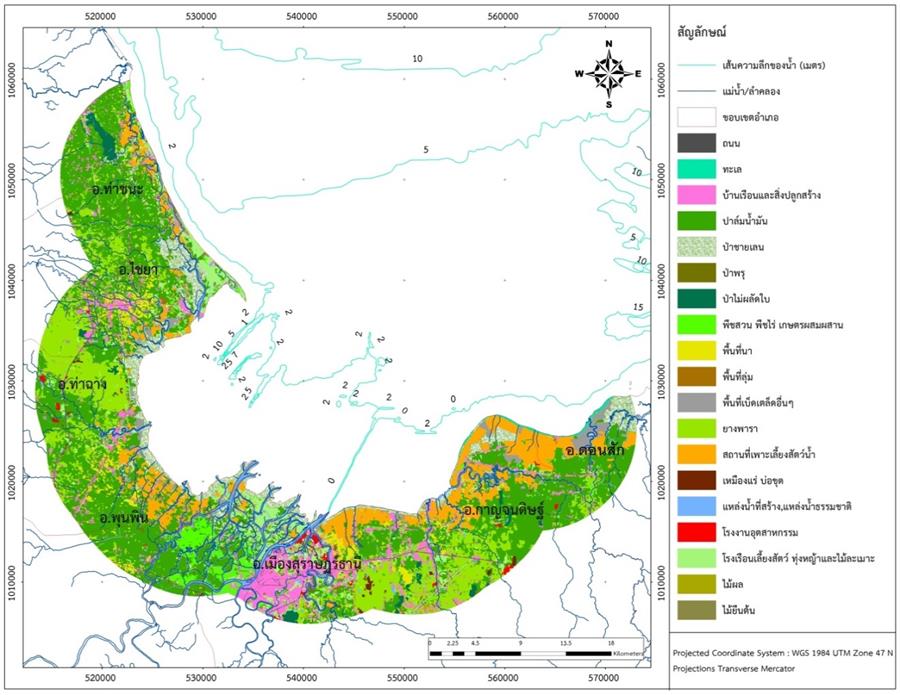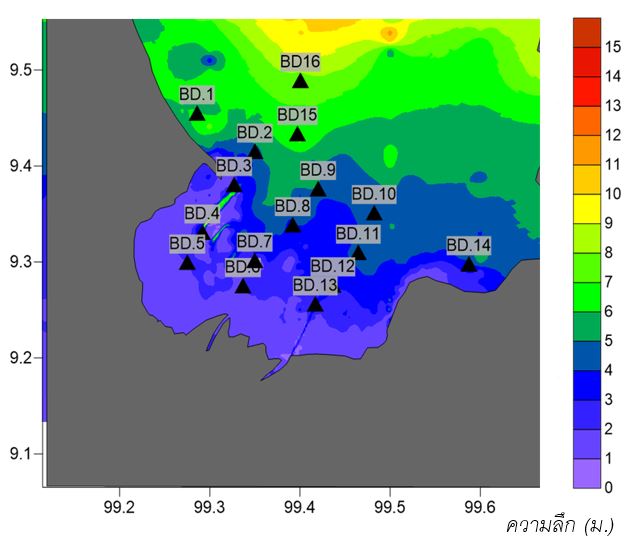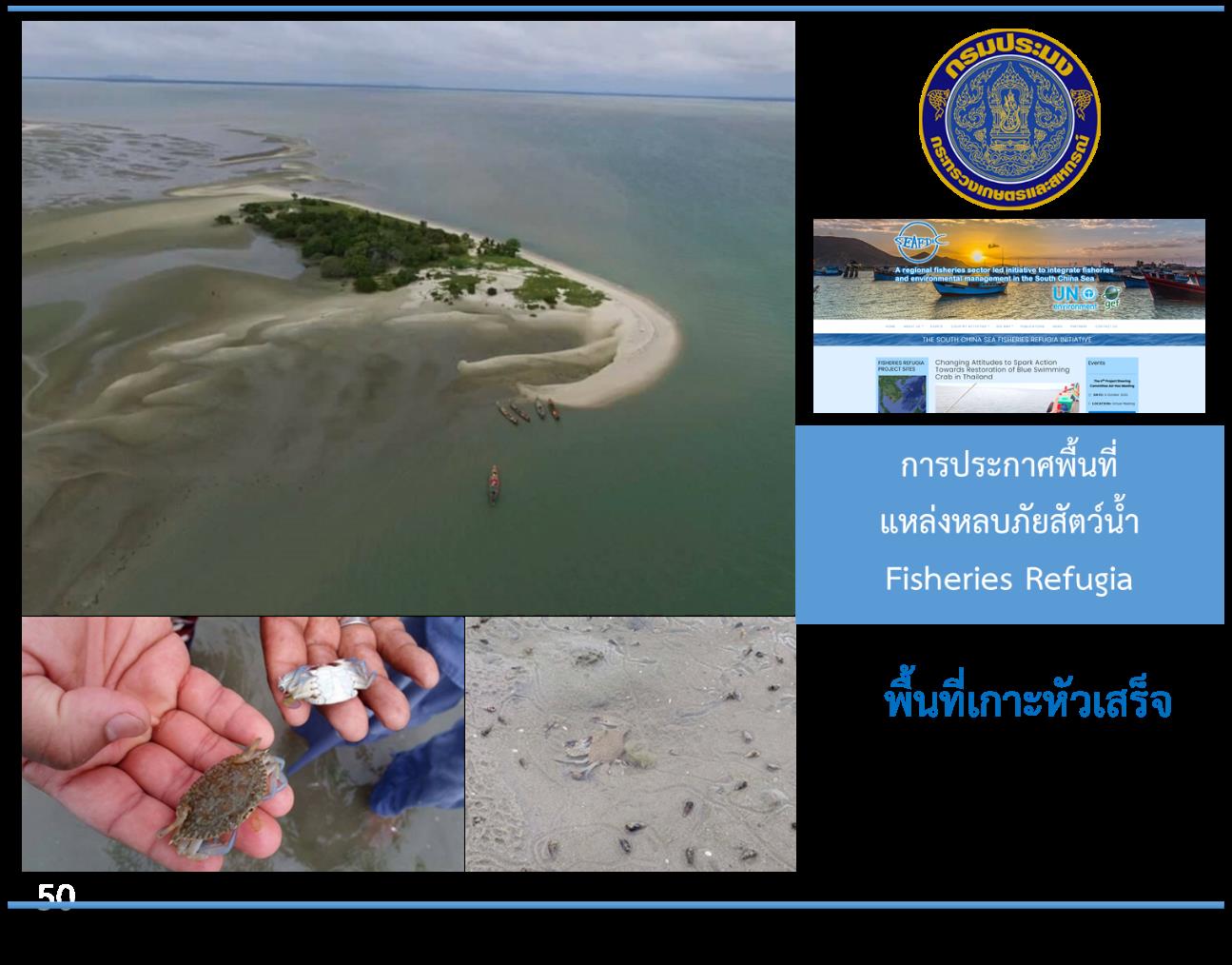Sustainable Management Strategy of Aquatic Animal Resources in Bandon Bay, the Large Watershed Area in Southern Thailand
Between 2020 to 2023, Walailak University led by Asst. Prof. Dr. Amonsak Sawusdee, in collaboration with the Network partner: Department of Fisheries, Department of Marine and Coastal Resources, Thai Frozen Foods Association, and local community partners who live in Bandon Bay to progress a research project on sustainable management strategy of aquatic animal resources in Bandon Bay, the large watershed area in Southern Thailand. The research team has been collecting ecosystem data, fisheries resources, oceanography, and area utilization of Bandon Bay to comprise a strategic plan for the sustainability resources in Bandon Bay.
Ban Don Bay is one of the most important watershed area in the Gulf of Thailand and an important area where blue crab is the popular seafood consumed in the country, including export to income for our country. Over the past statistical data, it was found that the predominant aquatic animal, such as blue crabs in nature, has decreased dramatically. As a result, it appeared that fishermen’s income from fishing has decreased. Due to the vulnerability of essential fishery areas, academics, and network partners, Walailak University has used academic and research data for planning to management of Ban don Bay. The area has established fishery refugia to ensure that aquatic animals, especially embryos, have shelters to grow metamorphosis in the future. It will result in the fishermen having more fish to catch and more income.
From the ongoing research projects and outreach activities in Ban Don Bay in 2022, the research team, in collaboration with the Department of Fisheries and local fishermen, has developed a management strategy for both the environment and fisheries of Ban Don Bay as follows:
- Promoting and raising awareness among local fishermen to catch blue crabs larger than 10 cm in size and bring berried female blue crabs to the local hatching stations and continually release and restore baby crab to the sea.
- Promoting blue crab activities and stations in suitable areas: Tha Chana District, Chaiya District, Don Sak District, and Kanchanadit District and releasing large amounts of blue crab larvae during high primary reproductive season, which has the right time and environment to have large amount of food for crab larvae in the bay; that is the reason why those areas are the essential nursery ground.
- Continuing research to track or establish a database of lost and discard fishing gear to reduce the impact of ghost fishing to both animals and ecosystems.
- Organizing ecological cleaning activities, especially in sensitive areas, for collecting lost fishing gear from the Bandon Bay ecosystem.
- Establishing an obvious measure to increase the spawning potential ratio (SPR) for determining the minimum landing size based on community participation
- Monitoring of blue crabs to know abundance status and apply or adapt for appropriate management practices regularly
- Stimulating fishermen in the area not to do fishing near shore and announcing the area as a nursery for young aquatic animals, especially the area suitable for crab embryo habitat (Tha Chana, Donsak)
- Encouraging fishermen to use legal poaching, 2.5-inch nets, which will reduce the impact of illegal fishing gears to the sea floor.
- Evaluating the impacts of waves, erosion and the deposition of sediment and utilizing coastal areas
- Managing areas for proper usage which does not lead to the deterioration of coastal areas and Ban Don Bay
- Requesting cooperation or regulating activities on shore and land that does not cause additional heavy metal accumulation
- Promoting chemical-free agriculture to minimize chemical substances entering the ecosystems of Ban Don Bay
- Tracking the water quality for chemical substances and nutrients, including nitrite, nitrate, phosphorus, and other chemical parameters, with the purpose of managing vulnerable areas, including spawning grounds and seagrass areas.

Figure 1 Bandon Bay location and Shape

Figure 2 Depth Survey

Figure 3 Koa Sed as a fishery refugia zone


Goal 14: Life below water
Goal 4: Quality education
Goal 17: Partnerships for the Goals

